
Madrid
( 2 user reviews )Madrid is the capital and largest city of Spain, as well as the capital of the autonomous community of the same name (Comunidad de Madrid). As of July 2005, the population of the city was 3,228,000 and the population of the metro area was 5,843,000. Madrid is best known for its great cultural and artistic heritage, a good example of which is the El Prado museum. Madrid also boasts some of the liveliest nightlife in the world.
Understand
Climate
The climate of Madrid is continental; mainly dry and quite extreme at times, with frequent rain in winter. Madrid sees perpetual sunshine and a characteristically hot temperature in the summer, but with a fairly cold temperature in the winter. Spring and autumn are fairly temperate with most rainfall concentrated in these seasons, together with winter. Spring is definitely the best time to visit, especially the months of April, May and June. Rainfall occurs sporadically, and snowfall is not something that happens every year in the city, but there is abundant snowfall in the adjacent mountain ranges nearby.
Location
Madrid is located just northeast of the geographical center of the Iberian Peninsula, in the middle of the Spanish central Castillian plateau (Meseta central), at an average altitude of 650m. Nearly all of the most famous tourist areas are located in the center of the city including Puerta del Sol, Plaza Mayor, Palacio Real, and Plaza de Colón. The major streets in Madrid include the Gran Via, Alcalá Street, and Paseo de la Castellana.
Culture
The culture of Madrid was dominated by its religious and Royal history. Enormous, monolithic cathedrals and churches are plentiful in Madrid, as well as medieval architecture, although nowadays Madrid is just as much a cosmopolitan city as Berlin or London, full of new architecture, life style and culture.
Madrid was also the capital of the Franquist dictatorship (1939-1975) and the city still seems to represent a conservative part of Spain to many Spaniards. However, the city is also the epicentre of the famous Movida, Spain's 80s movement that bred personalities such as the director Pedro Almodóvar. The heritage of this era is indeed still visible in the city centre, where a party can be found at all times and one of the most liberal and colourful environments of Spain can be seen. The city centre is also known for its great gay tolerance.
The citizens of Madrid, who refer to themselves as Madrileños or the more traditional and currently seldom used term "gatos" (cats), live by a daily routine that is heavily influenced by the climate. Due to the typically extreme midday heat, a "siesta" is observed during which some citizens take a break to cool off, though Madrileños can usually only afford this 'luxury' during holidays and weekends. Most stores are open during all the day, just small stores are often closed during this time. Workers and those more afflicted by Western lifestyles choose not to observe this long break and work traditional business hours, which are usually between 9AM and 6-7PM. During summer many offices, however, will have a summer schedule requiring workers to start at 8am and finish at 3pm (most commonly without the standard 1-2 hour break for lunch). Offices usually close during the weekend but businesses are often open Saturday morning (downtown stays open until afternoon). Most grocers are closed on Sundays, but some major chain and department stores linked to "culture" (books, music, etc.) will be open throughout the day and all of them on the first Sunday of the month.
Madrid possibly has the largest number of bars per capita of any European city and a very active nightlife; Madrileños are known to stay up until as late as 5AM-7AM. It is quite common to see a crowded Gran Via on weekend nights. It is important to note that, due to this lifestyle, lodging located near the fun areas may end up a nightmare for light sleepers if your window matches the street.
Madrid has a very modernized and elaborate transportation network of buses and Metro. The city contrasts with some large European cities in that it is extremely clean, and city employees in bright yellow vests can almost always be seen cleaning the streets and sidewalks. Like most large cities, however, there is a substantial population of vagrants and beggars lining the streets.
Madrid is one of the biggest and most cosmopolitan cities in Europe. Communities of West Africans, North Africans, other Europeans, Chinese, Indians, Filipinos, Pakistanis and (especially) Latin Americans are prominent.
Some popular neighborhoods are:
-
Alonso Martínez - Many pubs and small discos. Until about 3AM, a very young crowd, and if you′re around here before midnight, and over the age of 20, prepare to feel positively old. Most places close around 3AM, then people move to nearby areas to continue partying (clubs in Gran Via or Tribunal).
-
Barrio de las Letras / Huertas - Many of Spains most famous writers lived there (Cervantes, Quevedo, etc.). It is among Lavapies, Puerta del Sol and Paseo del Prado. It is an area full of history and interesting buildings and is also well-known because of its concentration of bars, pubs, restaurants and hotels. Plaza de Santa Ana is a beautiful square.
-
Chueca - Near Malasaña and Gran Via, it is the gay district (although noone is ever excluded) with a very strong personality. New design, trendy shops, cool cafes. Pop and electronic music. By far, the most cosmopolitan place in town. Has become quite chic and expensive.
-
Gran Vía - Major street that includes many popular nightclubs, usually open from 1AM to 6-7AM.
-
La Latina - Near Lavapies, it is the place to go for tapas and full of bohemian young people looking for stylish bars. In the old section, many small bars and pubs, a generally older crowd (late 20s, 30s - you know, "adults"). Contains La Cava Baja street. Avoid places in the Plaza Mayor but for sunbathing and beers. Multiple bars serving fantastic tapas in the Cava Baja and Cuchilleros. It's surprisingly very crowded on Sunday mornings, from 11AM to late in the afternoon due to its close location to the flea market El Rastro.
-
Lavapies - Multicultural quarter of the city, with more than 50% of foreign residents, mostly from Africa, Asia and Latin America. Plenty of world music and flamenco bars and many alternative theaters and art galleries. Lavapies is maybe the most cosmopolitan and hippy area at the same time in Madrid. Indian restaurants, alternative coffees, African music and South American shops. Walking around for a coffee is well worth it.
-
Moncloa - Due to its proximity to the main University in Madrid (Universidad Complutense), Moncloa is associated with students and a student lifestyle. Many cheap bars and discos as it is near the university although some of the places are best avoided.
-
Salamanca - Plenty of expensive boutiques, uniques shops with impossible prices and department stores.
-
Torre Europa. A very posh or "pijo" crowd, full of pubs and clubs. Quite expensive and virtually uniform music, places, and people.
-
Tribunal / Malasaña - Alternative area. Mainly rock and punk music clubs, some of them still open from "La movida madrileña" (beginning of 80's). Calle Manuela Malasaña is a great place to start.
Getting there
By plane
Madrid Barajas International Airport (IATA : MAD), 902 404 704, is located 13km from the Puerta del Sol. It has 4 terminals, including a new low-cost carrier terminal that opened in 2006.
The airport is connected to the city by Metro line 8 (pink). Metro tickets to/from the airport cost €2. Buses 200 and 204 operate between the airport and Plaza Colón and Avenida de América in Madrid. Night Shuttle operates a night bus between the airport and city center for €9.90 per person. Taxis from the airport to the city center cost ~€32.
There are plans for a commuter train link from Atocha and Chamartín to the airport.
Madrid is a very major airport and is serviced by many dozens of airlines.
Two smaller airports, Torrejón and Cuatro Vientos, also serve the city.
By train
Renfe (+34 902-240-202) operates train service to/from Madrid. Frequent trains operate between Madrid and Barcelona (2h 40min), Seville (2h 20 min), Malaga (2h 30 min), Zaragoza, Tarragona, Lerida, Huesca, Ciudad Real, Puertollano, Lisbon, Milan, the French coast, Paris, with continuing journeys to most of Europe.
Northbound trains arrive and depart from Chamartín station, while trains to Barcelona, Valencia and southern Spain depart from Atocha railway station.
By bus
Madrid has eight enormous international and intercity bus stations. Information on where buses to a particular destination depart from can be found at the Tourist Office.
Many of the international buses, and those headed south of Madrid, arrive at and depart from Estación Sur de Autobuses (Calle de Mendez Alvaro, Tel:+34 91-468-4200 ) which is accessible by metro.
Buses to and from Barcelona and Bilbao operate from the Avenida de America bus terminal, also accessible by Metro.
By car
There are car rental facilities available at the airport, train stations, and other main travel sites. Always be sure to have a street map handy! The roads within Madrid are difficult to navigate as there are no places to stop and consult a map or check your route.
Also, if you are relying on GPS navigation, be aware that there are several consecutive junctions underground near the centre and your GPS may not get a signal underground. Plan your turnings before you enter the tunnels.
Traveling around
Public Transport
Madrid proudly sports one of the best public transportations networks in the world and the second largest metro network in Europe, second only to London's. Buses and subways form an integrated network and work with the same tickets. A single ticket costs €1, a ten trip ticket costs €9. Alternatively, you can buy unlimited travel passes as follows: 1 day (€5.20), 2 days (€8.80), 3 days (€11.60), 5 days (€17.60), or 7 days (€23.60). Children under 11 receive a 50% discount. Tickets can be purchased at Metro stations, news-stands, and estancos (tobacconists').
By metro
The Metro de Madrid (Madrid's Subway/Underground) is one of the best and cheapest metros in Europe. In addition, the underground tunnels of the Metro provide relief from the sun on hot days. Stamping the ticket one time allows you to use the Metro network as long and far as you like - make sure you stay inside the Metro zone, once you leave it, you'll have to stamp your ticket again. When you travel to or from airport stations, there is additional supplement of €1, which can be paid at the entrance or exit. The Passes do not require this supplement-it is included in the price. You can catch some trains as late as 2:00AM, although the official close time for the metro system is at 1:30AM.
Nights before Saturdays, Sundays, and public holidays have a night bus (MetroBúho) service on the same routes as the Metro lines, from rougly 01:00AM to 05:30AM. Stops for these lines are sometimes not in obvious places, especially in the pedestrian areas in the city center.
By bus
Whatever the Metro doesn't cover, the buses do.
Night buses (Búhos, "night owls"), have their main hub at Plaza de Cibeles , covering most of the city at roughly 20-minute intervals.
By taxi
Taxis can be hard to find during late hours on weekends, especially if there is some rain. Unlike in other European cities, there are few taxi stands; just stand by the side of a major road or bus stop and wave your hand to signal an available taxi passing by. Available taxis have a green libre sign in the windshield and a green light on top.
Official taxis are white, and have a red stripe and the flag of Madrid on the front door. The tariff is displayed on top of the car (a 1 during daytime, a 2 during the night, which become 2 and 3 on holidays such as Christmas Eve).
There are also special surcharges for entering or leaving the airport/train station. Ask for the written table of tariffs and charges (suplementos) (shown on small stickers on rear windows, compulsory by law) before paying if you think it's too expensive.
Be aware there are some taxi drivers that will do what is called 'la vuelta al ruedo' which basically means they will drive you around or through the crowded avenues to increase the fare.
By car
Transportation by private automobile in Madrid can be very difficult. The Spanish capital suffers from the typical problems of most big cities; far too many cars and not enough space to accommodate them. Sometimes there can even be traffic jams in the Paseo de la Castellana at 3:00 AM (early to some Madrileños). The problem is compounded by the narrow streets in the old town, where a lorry delivering beer barrels to a local bar can cause a huge tailback. Looking for a place to park your car Finding a parking space can be very time consuming, and difficult if one is not skilled in the art of close proximity parallel parking. Many Spaniards are also lacking in this art, prompting them to simply park in the street, blocking other cars in. If you find yourself blocked in by such a practice, honk your horn until the driver returns. If you parallel park your car in Madrid, be aware that most Madrileños park by sound alone. They will feel no remorse for repeatedly hitting the car in front and behind them while trying to get into or out of a tight spot. If you value your car's paint job, or you have rented a car, it may be best to park underground. Though this is no guarantee for nobody hitting your car, the chances are somewhat diminished.
On the other hand, travel by car can be advantageous; going home by car on weekends is, of course depending where you live, usually faster than by public transport.
By bicycle
Riding a bicycle in Madrid is quite dangerous because there is no reserved section of the road for bikers, and drivers are not used to seeing bicycles in the city. This is due to Madrid not being a flat city so Madrileños do not see travel by bike as being practical. The Metro limits the times when a bicycle can be carried on it. However, Madrid is not totally devoid of bicyclists- Madrid bikers can often be seen riding in El Retiro, Madrid's second largest park. Enjoy the nature or do some sport, but note that the parks are considered dangerous after the sun sets. You can get a map with the bicycle paths at tourist offices. The paths have been built the past few years to try and promote bicycling.
See
Golden (art) Museum Triangle
-
Museo del Prado , +34 90 2107077, Tu-Su: 9AM-8PM, Closed M and some holidays, Paseo de Prado, Metro: Atocha or Banco de España, Bus lines 9, 10, 14, 19, 27, 34, 37 and 45, One of the finest art collections in the world and the best collection of classical art in Madrid. Includes many different collections: the Spanish (El Greco, Velazquez, and Goya), the Flemish and Dutch (Rubens, van Dyck, and Brueghel), Italian (Botticelli, Tintoretto Caravaggio, and Veronese) and German (Albrecht Dürer, Lucas Cranach, and Baldung Grien). Some highlights not to miss at the Prado: The Bosch masterpiece **The Garden of Earthly Delights**, The famous Velazquez piece **Las Meninas**, The **Black Paintings** and **The Third of May 1808** by Goya, **Adoration of the Shepards** by El Greco, and **David with the Head of Goliath** by Caravaggio. Be sure to walk along **Paseo del Prado**, a pedestrian walkway full of fountains and trees near the museum.
-
Reina Sofía National Museum and Art Center , +34 91 7741000, Mo-Sa 10AM-9PM, Su 10AM-2:30PM, Santa Isabel 52, Metro: atocha, Houses Madrid's best collection of modern art. It includes many of Pablo Picasso's most revered works including the renowned **Guernica**. The Reina Sofía also houses masterpieces by Miró, Kandinsky, Dalí, Bacon, and more.
-
Thyssen-Bornemisza Museum of Art , Opens from Tuesday to Sunday, from 10AM-7PM. The ticket office closes at 6:30PM. The Museum is closed all day on 1 Jan, 1 May, and 25 Dec, Contains a large art collection including masterpieces by Monet, Goya, Degas, Renoir, Van Gogh, Picasso, Mondrian, Bacon and Lichtenstein.
Other Museums
-
National Archeology Museum , +34 91 5777912, Tu-Sa: 9:30AM-5PM, Sun and Holidays 9:30AM-3PM. Closed: M; Jan 1 and 6; May 1 and 15; Dec 24, 25, and 31. (Holidays: Apr 5 and 6, May 2, Aug 15, Oct 12, Nov 1 and 9, Dec 6 and 8., Calle Serrano 13, Metro: Serrano, Don't let the sound of it frighten you. This well designed museum houses an incredible collection of archaeological finds from across the peninsula. It leaves the visitor with a sense of the chronology of civilization in Spain (Iberian, Phoenician, Greek, Roman, Visagoth, Arab, and into the modern age). The famous Dama de Elche, an Iberian (pre-Roman) fertility goddess statue, is in this museum. There are also a few pieces from ancient Egypt and Mesopotamia. It is currently undergoing renovations and is open with limited exhibits.
-
Museo de Lazaro Galdiano , +34 91 5616084, W-M: 10AM-4:30PM. Closed: Tu; Jan 1; Easter Thursday and Friday; May 2 and 3; Nov 1; Dec 6 and 25., Calle Serrano 122, Metro: Gregorio Mariñon, This museum houses the stunning collection of Spanish entrepreneur José Lázaro Galdiano (1862-1947) and is considered to be one of the best private collections in Spain. Not only will you find works by Goya, Velázquez, El Greco and others, the museum is also filled with jewelry, furniture, sculpture and ceramics. This is an excellent museum that is usually not crowded and well worth the price of admission.
-
Real Academia de Bella Artes de San Fernando , +34 91 5240864, Tu-Fr: 9:30AM-7PM, Sa-M: 9:30-4:30PM., Calle Alcalá 13, Metro: Sevilla or Banco de España, Highly impressive art collection with paintings, sculptures, drawings and prints. Several Goya masterpieces.
-
Museo de América , +34 91 5492641 and 91 5439437, Tu-Sa: 9:30AM-3PM, Su 10:00AM-3PM, Closed Mondays, Jan 1, May 1, Dec 24, 25, 31, Avenida Reyes Católicos 6, Metro: Moncloa, An excellent museum that many tourists miss. Houses thousands of artifacts from the Americas. The exhibit displays objects from many native cultures from before European conquest to colonial times and beyond. Don't miss the Tesoro (Treasure) de los Químbayas, a collection of gold objects that was given as a gift by the Colombian government. Also of interest is the Tudela Codex, an Aztec law book from the 1500's. Beware: most explanations to the objects on display are in Spanish only.
Other museums
-
Museo de la Ciudad (Museum of the City) , +34-91-5886599, Mo: Closed Tu-Fr: 10am-2pm and 4-7pm Sa&Su: 10am-2pm., Calle Príncipe de Vergara 140, Metro: Cruz del Rayo, With five floors, it tells the city's history, since it was founded by the Arabs. There are models of some urban areas.
-
San Antonio de La Florida Hermitage, This small church is famous for its murals, painted by Goya. It's also the mausoleum of the painter.
-
Real Madrid Museum, In Santiago Bernabeu Stadium, showcases all the trophies of one of the most successful football clubs in the world.
-
Museo Sorolla , Tu - Sat: 0930 to 2000 - Sun 1000-1500, General Martínez Campos, 37, Autobuses: 5, 7, 14, 16, 27, 40, 45, 61, 147 y 150 Metro: * Iglesia (Línea 1) * Rubén Darío (Línea 5) phone=, This museum is in what was the impressionist painter's house and features fine furniture and porcelain as well as his paintings.
Places of Interest
- Palacio Real , +34 91 4548800, M-Sa: 9AM-5PM, Sundays and holidays: 9AM-3PM, closed occasionally for official ceremonies., Calle Bailen, Metro: Opera, The Palacio Real (Royal Palace) is an enormous palace, with scorching plains of concrete around it and the **Real Armorial** (Royal Armory), a two-story collection of medieval weapons and armor. Explanations in the armory are in spanish only, so do not expect to understand much unless your know spanish names for all that medieval stuff. In spite of its name, the palace is not the residence of the current royal family. The Royal Palace is considered to be one of the most emblematic and beautiful buildings in Madrid, not only for its location but also for its architecture and the artistic treasures to be found in its rooms. The façades of the palace measure 130 meters long and 33 meters high with 870 windows and 240 balconies opening on to the facades and courtyard. It has a surface area of 100,000 square meters with 44 stairways and more than 30 principal rooms. Also located within the palace is the Pharmacia, which contains hundreds of bottles of early medicines and a reconstructed laboratory.
- Plaza Mayor, Metro: Sol or Opera, The best known plaza in Madrid, this impressive square is now one of the main stops on any tourist visit. Originally built outside the city walls, this square has played host to bullfights, markets, symphonies, tournaments and executions. The statue of Felipe II sits in the middle across from the beautifully painted Casa de la Panadería, the former headquarters of the bakers guild.
-
Puerta del Sol, Metro: Sol, This plaza is the
-
Atocha RENFE, (Metro: Atocha RENFE) A large train station across the street from the Reina Sofia Museum of Art. The interesting thing about it is the palm garden inside the old building, complete with a pond full of small turtles. It's free, and very much worth visiting.
-
El Retiro Park, Metro: Retiro, Ibiza or Atocha, The main of Madrid, the perfect place to take a rest during a sunny day, or take part in the drum circles around the statue of Alphonso XII on summer evenings. There is a large boating lake where one can hire a rowing boat - great fun for the children! There is a monument to the victims of the Madrid 3/11 terrorist bombings, the **Forest of the Absent**, and the **Crystal Palace**, a large structure entirely made of glass. Sunday afternoons in summer are a treat in the park, where young hippies play bongos and dance.
-
Catedral de la Almudena, This massive cathedral faces the Palacio Real. Finished in the end of 20th century, it is where the Princes of Asturias Felipe and Letizia were married in 2004.
-
Gran Vía, Metro: Gran Via, Callao, Plaza de España, Banco de España, Literally,
-
Plaza de Cibeles, Metro: Banco de España, Houses one of Madrid's emblems, the fountain of Cibeles, and one of the world's most beautiful post offices, **Palacio de las Comunicaciones**.
-
Plaza de España, Metro: Plaza de España, Contains a sculpture of Cervantes and his famous Don Quixote and Sancho Panza characters.
-
Templo de Debod , +34 91 765108, Tue-Fri: 10AM - 2PM and 6PM - 8PM, Sat-Sun: 10PM- 2PM, closed Mondays and holidays., Paseo del Pintor Rosales 2, Metro: Plaza de España, An Egyptian temple, located in one of Madrid′s most beautiful parks. Near the Royal Palace and Plaza de España, it was a present given by Egypt to Spain for its role in saving the temple of Abu Simbel from the floodwaters of Lake Nasser following the construction of the Aswan Dam in southern Egypt. A great place to watch the sunset.
-
La Casa de Campo, Metro: Lago, Casa de Campo, Batan, The park at the rear of the Palacio Real which used to belong to the Royal family. Much of the park has been taken to smaller activity parks such as the Zoo but in general it's peaceful. From Moncloa you can take a **teleferico** across into the park.
Things to do
There are a number of free, English language periodicals that you will find in bars and restaurants that are a great source of event information. PopGuide Madrid is Madrid's premier English and German lifestyle magazine and features the best Madrid has to offer and the latest in film, fashion, music and art. The monthly InMadrid newspaper has a number of articles and information about events around town. Aimed at the 20-35-year-old crowd, European Vibe has listings for concerts, exhibitions, bars, restaurants, parties and other events happening in Madrid as well as articles about living in the city. Check the websites for current distribution points.
- Circulo de Bellas Artes , +34 91 5225092, Calle Marqués de Casa Riera 2, Metro: Banco de España, A non-profit cultural center located a short walk from Sol, the CBA offers up a wide variety of events and shows including film, music, art displays, dance, theater and more. See the website (in Spanish) for a list of activities.
Flamenco Shows
Concert Venues
-
Sala Heineken , +34 91 5476680, Princesa 1, Metro: Plaza España, National touring acts for rock and pop music.
-
La Riviera , +34 91 3652415, Paseo Bajo de la Virgen, Metro: Puerta del Angel or Principe Pío, Another large venue for touring rock and pop bands.
-
Gruta 77 , +34 91 4712370, Calle Cuclillo 6, Metro: Oporto, Concerts everyday; pop, rock, punk
Classical & opera
-
Spanish National Orchestra, Performs every Fri, Sat and Sun at the *Auditorio Nacional* on Calle Principe de Vergara. The Auditorio Nacional is also the main concert venue for the symphonic concerts of the Community of Madrid Orchestra and the Madrid symphony Orchestra and the main venue for touring classical artists and orchestras.
-
Teatro Real (Royal Theatre), The main opera theatre in Madrid.
-
Teatro de la Zarzuela, The Spanish version of the Operetta (Zarzuela) is performed here.
-
Orquesta de Radio Televisión Española, Performs every Thu and Fri at the *Teatro Monumental* on Calle Atocha.
-
Auditorio 400 of the Museo Centro de Arte Reina Sofia, The main venue for contemporary music.
-
Cuartel del Condeduque
-
Foundation Joan March Auditorium
-
Banda Municipal de Madrid , Performs in El Retiro Park in the summer.
Futbol
Three teams from Madrid play in La Liga (Spain's premier division). The matches between Real Madrid and Atlético de Madrid are known as "El Derbi Madrileño" (English: Madrid Derby).
-
Real Madrid , For football fanatics, a trip to the **Santiago Bernabeu**, the home of local club Real Madrid is not to be missed. Real Madrid is the most successful football club in Spain and Europe, having been crowned Spanish champions a record 31 times and European champions a record 9 times. Their biggest rivals by far are FC Barcelona, with which it contests matches known popularly as **El Clásico** at least twice a year. The rivalry between the two sides is by far the biggest in Spain, and stems from the longstanding traditional rivalry between the Spanish and Catalan speaking parts of Spain. However, tickets for such matches often sell out very quickly.
-
Atlético de Madrid , Plays games in the Vicente Calderón stadium. The club is one of the most successful in Spanish League history, having won both La Liga and the Copa del Rey on nine occasions, including a double in 1996. They also won the European Cup Winners Cup in 1962, were European Cup runners-up in 1974 and Intercontinental Cup winners in 1975.
-
Getafe Club de Fútbol , Plays games at Coliseum Alfonso Pérez.
Bullfighting
Basketball
There are two major teams, Estudiantes and Real Madrid.
Tennis
Movies and film
There are a number of cinemas offering American and British films in English (along with films in other languages). These original films are denoted in the listings by a designation of "V.O." which stands for versión original. Cinemas in Madrid will sometimes have días del espectador (viewer days) with cheaper ticket prices, usually on Mondays or Wednesdays. Some of the V.O. theaters to check out are:
-
Yelmo Cineplex Ideal , +34 91 3692518, Doctor Cortezo 6, metro: Sol, Probably the best known V.O. theater in Madrid, it offers the largest selection of movies and is only a short walk from Sol.
-
Cine Doré, la Filmoteca Española , +34 91 3691125, Calle Santa Isabel 3, metro: Anton Martín, This is a wonderful, old Spanish theater dating from the 1920's. It has three screens and shows mainly
-
Princesa, +34 91 5414100, Calle Princesa 3, metro: Plaza de España
-
Renoir, +34 91 5414100, Calle Martín de los Heroes 12, Metro: Plaza de España
-
Cines Golem, +34 91 5593836, Calle Martin de los Heroes 14, metro: Plaza de España
-
Renoir Cuatro Caminos, +34 91 5414100, Calle Raimundo Fernández Villaverde 10, metro: Cuatro Caminos
-
Renoir Retiro, +34 91 5414100, Calle Narvaez 42, metro: Ibiza
Festivals
- La Transhumancia, Annual event during which the center of Madrid is free of cars and is instead filled with shepherds exercising their ancient right to drive sheep and livestock through the city.
Eat
Cuisine
Dishes popular throughout Spain are also widely served in Madrid.
In addition, Madrid has a number of "typical" dishes:
-
Callos a la Madrileña - A hot pot of spicy beef tripe similar to those found in Turkey and the Balkans.
-
Cocido Madrileño - Chickpea stew with meat and vegetable products. The particularity of this stew is the way it is served. The soup, chickpeas and meats are served and eaten separately.
-
Oreja de Cerdo - Pigs ear, fried in garlic. This popular dish is widely eaten throughout central Spain.
-
Sopa de Ajo - Garlic soup is a rich and oily soup which generally includes paprika, grated Spanish ham, fried bread and a poached egg. A variation of this soup is known as Sopa Castellana.
It is ironic that Madrid, located right in the center of Spain has higher quality seafood than most coastal regions. This quality comes at a price, and most Spaniards will rarely embark on the luxury of a mariscada (Spanish for "seafood fest"). Experiencing Madrid's seafood may be, for the visitor, an experience which will be worth the cost.
Meat and meat products (Jamon Iberico, morcilla, chorizo etc) are of generally a very high quality in Spain and particularly in Madrid.
Restaurants
Many of the restaurants and cervecerías in the Sol and Plaza Mayor area have "generic" poster board advertisements on the sidewalks with pictures advertising various paella dishes. These paellas are usually of bad quality and should be avoided. If you are looking for good, authentic Spanish paella, it is usually best to find a more expensive, "sit-down" type of restaurant that offers a variety of paella dishes.
A much better option is the La Latina neighborhood just south of Plaza Mayor, especially along the Cava Baja street. To enjoy a gastronomic tour of this area you can join the Old Madrid Tapas & Wine Tour . There are also a number of deli-like shops along Calle Arenal that offer food para llevar (for take away).
At bars, one generally orders various sized plates, a ración meaning a full dish, a media ración a half dish or a smaller version which would be a tapa, a pinxto or a pincho.
The Spaniards don't eat lunch until 2 or 3 pm, and dinner doesn't start until 9 or 10 pm. As a rule of thumb, restaurants serve lunch from 1PM (earlier in touristic zones) until 3:30PM, then close and re-open for dinner at 8:00PM, serving until 11:00PM. This schedule is usually for restaurants since bars and "mesones" are usually opened all day long offering a wide variety of "tapas" and "bocadillos"(rolls) for a cheap price. If you're really desperate, the standard bunch of fast food chains do stay open throughout the day.
Budget
-
El Corte Ingles, Calle de Preciados, near Sol, Madrid's largest department store features a fully stocked supermarket that includes a deli, bakery and fresh produce.
-
El Brillante, 3 locations
-
La Zapateria, 3 locations
-
Las Bravas, Calle de Espoz y Mina 13
- Museo del Jamon, Several locations, Offers deli take out service as well as tapas and raciónes at fairly reasonable prices.
Mid-range
-
Alhambra, +34 91 5210708, Calle de Victoria 9, Metro: Sevilla, This is a good place to stop in on a hot afternoon for a cold beer and some Andalusian tapas. Try some of their sausages and cheeses.
-
Al-Jaima (Cocina del Desierto), +34 91 523 1142, Calle Barbieri 1, Metro: Chueca, This dark, cave-like Moroccan restaurant has some of the best North African food in the city. The seating is at low Moroccan-style tables and the calm, mellow atmosphere makes you feel like you're far from the bustling center of Chueca.
-
Bacchus , +34 913280468, Avenida Moratalaz 141, Metro: Vinateros or Artilleros, Right in the middle of Lonja, an area with plenty of places to eat and pubs. It is still close enough from city centre but offers a more relaxed surrounding, making it one specially indicated for families, although there is an ample age range of customers. Bacchus offers a mixture of innovative and old style tapas. Very good and expensive wine list. It can get very busy on weekends. Nice outside sitting area but inside is very small and dirty.
-
Casa de Valencia, Paseo Pintor Rosales 58
-
Casa Nemesio, Paseo de la Castellana 260
-
Chocolatería San Ginés, +34 91 3656546, Calle de Pasadizo De San Ginés 5, metro: Sol, Specializing in chocolate con churros, this Madrid fixture is open 24 hours a day, and is the perfect place to top off a night on the town. Also offers the usual assortment of coffees and teas.
-
Cocina Mex-Mex, +34 91 521 7640, Calle Libertad 33, metro: Chueca, This is a small, usually crowded, friendly Mexican restaurant with good food and drinks at reasonable prices. Sample some of their tacos and super cheesy chilaquiles.
-
El Inti de Oro, +34 91 4296703, Calle de Ventura de la Vega 12, metro: Sevilla, For something different, try this great Peruvian restaurant a short walk from Sol. Be sure to order some of their ceviche and try the Pisco Sour cocktail.
-
Estay, +34 91 5780470, closed on Sundays, Calle de Hermosilla 46, metro: Velázquez, A great place for tapas, they offer a large menu, reasonable prices and excellent quality food. The Solomillo al Foie is excellent and the deserts are recommended as well. Very crowded on Friday and Saturday nights.
-
Jaen 3, +34 63 0036987, Calle Poitiers 3, metro: Coslada Estadio Olimpico, An excellent bar de tapas and restaurant. A nice place to enjoy good Spanish food and original lifestyle without having to spend too much. The place is just outside central Madrid and so it's not influenced by classic tourist traps and you can enjoy some good food and true raciones and the good old Spanish bar life. The owners are pretty nice people and you might find yourself chatting with them about Madrid and Spain. In summer time it has a superb teraza that is pretty close to the Olympic Stadium.
-
La Casa del Abuelo, +34 91 5212319, Calle de Victoria 12, metro: Sevilla, A Madrid landmark in operation for over 100 years, this place attracts a standing room only crowd on the weekends. They mainly serve shrimp based tapas dishes so if you're not into shellfish steer clear. Order a plate of their garlic shrimp along with some of the house wine.
-
La Zapateria Tapas Bar , +34 91 5210708, Calle de Victoria 8, Metro: Sevilla, Great potato dishes here that you can get mixed with chorizo or other items. Also try the pincho moruno (pork skewers) or any of the other items you see displayed on ice in the front window. The Ribeiro on tap (sparkling white wine from Galicia) is not to be missed.
-
Malacatin , Calle Ruda 5, Serves all the typical Madrid cuisine.
-
Midnight Rose , Daily 1:30pm-4:30pm, 8:30pm-12am, Plaza de Santa Ana, 14, Restaurant of the ME Madrid Hotel. Mediterranean cuisine with Asian, American and Italian influences, with emphasis on seasonal Produce. Dining for private parties as well.
-
Samm, Calle de Carlos Caamaño 3, Metro: Pio XII, Best paella in Madrid.
-
Siam, +34 91 559 8315, Calle San Bernardino 6, Metro: Plaza España or San Bernardino, Beautifully decorated with a tranquil atmosphere, the food is quite reasonable and offers a nice departure from Spanish fare.
-
The Penthouse , +34 91 7016000, Plaza de Santa Ana 14, Located on the roof of the ME Madrid hotel, terrace-style restaurant serving tapas and traditional cuisine. At night they serve great mojitos in a young, club-like atmosphere.
Splurge
-
Botín , +34 913664217, Calle Cuchilleros 17, Metro: La Latina , Opened in 1725, Botín is listed in the Guiness Book of Records as the oldest operating restaurant in the world. Once a favourite of Ernest Hemingway, the menu still delights with specialities including roast suckling pig (cochinillo) and roast lamb (cordero). Insidersmadrid.com offers a tour of this institution.
-
Casa Lucio , +34 91 3653253, Calle de Cava Baja 35, Metro: La Latina, Pricey but worth it, the Spanish Royal family sometimes entertain guests here and you may run into a few sports figures and movie stars. You should definitely book ahead on the weekends, and reservations are recommended even for the weekdays. Known for their cocido, their roasts and their huevos rotos.
-
La Trainera , +34 91 5768035, Calle de Lagasca 60, metro: Velázquez or Serrano, A Madrid institution for decades, Trainera is an excellent but somewhat pricey restaurant serving strictly seafood dishes. They have a great wine selection and the waiters can recommend different vintages that will complement the food. Try the carabineros (giant scarlet shrimp) or the rodaballo (turbot). Usually closed in August.
-
Manete, Calle Doctor Castelo 2
Drink
Cafes
-
Café Central , Plaza del Angel 10, Metro: Sol, Café by day, live jazz music at night.
-
Cafe Circulo de Bellas Artes , Calle Alcala 42, Metro: Banco de Espana, A soaring hall on the ground floor of Madrid´s art center combines atmosphere, excellent food and good coffee at reasonable prices. A wonderful place for lunch not far from Madrid´s shopping or museums.
-
Cafe Commercial, Cafe Commercial, Metro: Bilbao, opened in the 1880´s, this is the oldest cafe in Madrid. Has been run by the same family since the early 1900's. There´s a modern internet cafe upstairs, but the downstairs remains traditional.
-
Café Gijón , Paseo Recoletos 21, Metro: Banco de España or Colon, A historic literary cafe. The outdoor terraza is nice in the summer.
-
Café de Oriente , Plaza Oriente 2, Metro: Opera, Overlooks the Plaza Oriente and faces Palacio Real. Outdoor tables in summer, cozy indoor rooms in the cold months. Basement banquet room with a glass floor over ancient remains. Excellent food.
-
Café Pabellon del Espejo, Paseo de Recoletos 31, Metro: Colon, Opened in 1978, but looks much older. Good food and very crowded during lunchtime.
-
La Mallorquina, Puerto del Sol 8, Mayor, 2, Metro: Sol, Famous for its pastries. Peaceful upstairs room where you can linger undisturbed over your café con leche and napolitana de chocolate (chocolate croissant).
-
Nuevo Café Barbieri, Calle Ave Maria 45, Metro: Lavapies, Slightly scruffy cafe draws an avante garde crowd at night.
Bars
Nightlife starts later in Madrid, with most people heading to the bars at 10-11PM.
-
Areia , Calle Horteleza 96, Metro: Chueca, Very cool chill out bar decorated with deep colours in a Moroccan style. Dark and inviting. The seating includes cushions on the floor, traditional tables and chairs, or if you’re lucky, grab the four poster bed at the back.
-
La Corolla, Visitag Manzana 10, Metro: La Latina, Specializes in delicious ‘tostas’ (small pieces of toast with different toppings) and avocado (aguacate), along with cañas (small beers).
-
La Via Lactea , +34 91 446 75 81, Calle de Velarde 18, Malasaña, Metro: Tribunal, A swingin' bar where you can twist the night away with local hipsters.
-
Miali, Plaza Santa Ana, Metro: Sol, Nice terrace outside,great for people-watching. The interior is tastefully decorated.
-
Museo Chicote , Daily: 17:00 to 02:00, Gran Via, Metro: Gran Via, Voted the Best European Bar 2004 by MTV-Campari. Extensive cocktail list. Claims to have served drinks to many famous celebrities, including, Ava Gardner, Frank Sinatra, Lana Turner, Gary Cooper, Orson Wells, Yul Brynner and Ernest Hemingway, Catherine Zeta Jones, Hugh Grant and Tim Robbins. They only serve drinks.
Clubs
Clubs generally open at about midnight. If you go in any earlier you may find it quite empty. Many clubs don't close until 6AM, and even then everyone is still full of life.
-
El Sol , Tuesday - Saturday: 24:00-05:30, Calle Jardines, 3, Metro: Gran Via, Popular with the 20-30 age group. Plays a mix of 70s, funk, and bossanova sounds. No dress code, but people do tend to look cool.
-
Joy, Calle Arenal 11, Metro: Sol, Well known across Europe. Attracts at multi-national crowd. Popular with tourists as well as locals. It plays a mix of popular dance music.
-
Kapital, Atocha, 125, Metro: Anton Martin, Enormous club with 7 floors.
-
Pacha , Thursday, Friday and Saturday: from 23:30 to 06:00, Calle Barcelo, 11, Metro: Tribunal or Alonso Martinez, Different dance music styles from night to night. Glitz and glamour.
-
Palacio Gaviria , Calle Arenal 9, Metro: Sol, Stunning club, decorated as a lavish 16th century palace, complete with sweeping marble staircase. Several rooms, including two dance floors with different music. Spanish pop, dance, R&B and other commercial sounds.
Sleep
Budget
-
Cat's Hostel , +34 91 3692807, +34 91 3692807, Calle Cañizares 6, Located in a 17th century palace, but has a modern interior and is clean and secure. Breakfast and internet is included in the price and there is also a bar. It attracts a young backpackers clientele. Shared dormitories for 4 to 14 people.
-
Equity Point Madrid aka Hostal Metropol , +34 91 5212935, Calle Montera 47 , two steps from Puerta del Sol, 30 seconds walk from Gran Via metro station, Features all-ensuite rooms (singles, doubles, 4-6 bed dorms). Free internet access, lively bar and restaurant.
-
Hostal Brisas , +34 91 5314403, Calle Cruz 8 1º, Metro: Sol, Sevilla, or Anton Martin, All rooms have ensuite, TV, central heating, air conditioning.
-
Hostal Plaza d'Ort , +34 91 4299041, Plaza del Angel 13, Cheap hotel with a good location near Plaza de Santa Ana. All rooms feature bathrooms, TV and air conditioning.
-
Hostal Villagarcía , +34 91 5220585, Calle Fuencarral 10 3º, Metro: Gran Via, Centrally located, all rooms include bathroom, TV, free wi-fi, air conditioning, central heating, laundry and baggage storage facilities. Rooms with kitchen, washing machine and fridge are also available.
-
Hostal Visa , +34 91 5310987, Calle Pérez Galdós 7, Simple, clean and secure. Central location close to Gran Via. Friendly staff.
-
Los Amigos Backpackers Hostel , +34 91 559 2472, +34 91 559 2472, Calle Arenal 26 Piso 4, Very central location. Breakfast is offered. There is a lounge area, a kitchen in which you are able to cook your own food, and a bar. The beds are clean, comfortable, and the staff are friendly.
-
Way Hostel Residence , +34-914-200-583, Calle Relatores 17, Small hostel, nice ambiance and is catered to young traveleres. Nice kitchen, friendly staff, and free internet.
-
Hostal San Martin , +34 915 319176, Calle Concepción Arenal 4, Metro: Callao, Small, clean guest-house on the 4th floor. Ideally located just meters from Gran Via, with great staff and free wi-fi. All rooms have sink & shower, but most share bathrooms.
Mid-range
-
Abba Atocha Hotel , Santa María de la Cabeza 73, Great location.
-
Apartments Gran Via , +34 679616855, +34 679616855, Mesonero Romanos, 15, Offers two apartments on the Gran Via street in Madrid. One has one bedroom, the other has two bedrooms.
-
Hotel Liabeny , +34 91 531 90 00, Calle Salud 3, Great location.
-
Hotel Madrid Preciados , +34 91 454 44 01, C/Preciados nº37, 4-star hotel in excellent location.
-
Hotel ME Madrid , +34 91 7016000, Plaza de Santa Ana 14, Great location.
-
Hotel NH Nacional , Opposite Atocha station, in the heart of the Art Triangle, 1 minute from the new exhibition centre ‘Caixa Forum’ and the botanical gardens.
-
Hotel San Antonio de la Florida , Paseo de la Florida 13, Metro: Principe Pio, All rooms have Internet access, Air conditioning, Multi-line phone, Wake-up calls, Housekeeping (daily), Complimentary toiletries, Hair dryer, Television, Iron/ironing board (on request).
-
Hotel Senator Gran Via Madrid , 902 052 394, Gran Via 52, a few minutes from Puerta del sol, 4-star hotel. Restaurant, bar, and meeting space.
-
Pension Paquita , +34 91 739 3831, Calle Lacoma 5, Family-run.
-
Hotel centro, +34 911 871 665, Calle gran vía 50, hotel close to Gran vía
-
Plaza Mayor Apartments , +34 695 097 612, Plaza Mayor 30 Madrid, Luxury short-term apartment rental in Madrid at affordable rates.
-
StopInRoom Apartments , +34 695 452 899, +34 695 452 899, Nuñez de Arce, 4, Offers 26 apartments in various parts of the city. For extra fees can offer ground transport, catering, language tutoring, and tour guiding also. Administrative phone +91 522 85 95.
-
WeLoveMadrid (We love Madrid) , +34-91-7584318, +34-91-7584318, Costanilla de los Angeles, 16, We love Madrid offers luxury apartments in the centre of Madrid for short and mid-term rentals. The apartments are fully furnished and have been designed with different themes that reflect the culture of city. (Painters of the court, La Movida de Madrid)
Splurge
-
Adler Hotel Madrid , +34 914 263220, Calle Velazquez 33, Goya 31, Metro: Velázquez, 5-star hotel housed in a completely refurbished building equipped with the modern facilities but whose 19th-century charm and secluded atmosphere have been carefully maintained. 45 deluxe rooms and suites.
-
Asturias , (+34) 914 296 676, (+34) 914 296 676, C/ Sevilla 2, 28014 Madrid, Spain, A 2 star Hotel. The Asturias is only 200 meters from the central Puerta del Sol.
-
Gran Hotel Velazquez , +34 91 575 28 00, +34 91 575 28 00, C/ Velázquez 62, 28001 Madrid, Spain, The Gran Hotel Velázquez is a 4 star hotel in Madrid located in the refined Salamanca district. This hotel has been providing stylish accommodation for over 50 years.
-
Gran Melia Fenix , 902 14 44 40, Hermosilla 2, Distinguished by a grand and glowing white exterior; bathed in neo-classical design; an illustrious interior of flowing banisters, bold colors, and noble décor.
-
Hotel De Las Letras , +34 91 5237980, Gran via 11, Old building with tasteful modern interior. Well sound-proofed against the busy Gran Via outside. Very comfortable beds. Rooms with TV, hi-fi, mini bar, bath/shower. Optional breakfast buffet with wide choice of good quality food and drinks. Pleasant, comfortable bar.
-
Hotel Villa Magna , +34 91 5871234, Paseo de la Castellana 22, A 5-star hotel on one of Madrid's most exclusive streets. 151 rooms and suites. The hotel is surrounded by landscaped gardens.
-
Maria Elena Palace , +34 913 604 930, +34 913 604 930, C/ Aduana 19, 28013 Madrid, Spain, The Hotel María Elena Palace is located just 200 metres away from the Puerta del Sol. Renowned for its magnificent glass dome in the lobby.
-
Meninas Hotel , +34 91 541 28 05 , +34 91 541 28 05 , Calle Campomanes 7, 4-star hotel in an exquisite historic building of the XIX century in the historic center of Madrid that has been transformed into a state-of-the-art boutique hotel. A classic atmosphere blended with modern decorative touches - a balance of unpretentious formality and well tempered cordiality.
-
Mirasierra Suites Hotel & Spa , (+34) 91 727 79 00, Calle de Alfredo Marquerie 43, 28034 Madrid, Spain, Mirasierra Suites Hotel & Spa is a modern luxury hotel located in Madrid′s prestigious residential district Mirasierra, overlooking the Sierra de Guadarama. The hotel is also home to the Verdil Restaurant .
-
Osuna , (+34) 91 575 28 00, (+34) 91 575 28 00, C/ Luis De La Mata 18, 28042 Madrid, Spain, Set in the middle of the main business districts of Madrid.
-
Quo Godoy Hotel , Avenida Quitapesares 35, 4 star-hotel with an avant-garde design. The hotel features 99 guest-rooms fully equipped, including 2 disabled rooms, 18 duplex rooms and 1 junior suite. Adjacent to the hotel is a convention center that is directly connected and can hold a variety of events from 10 to 800 people. Offering an in-door heated swimming pool, health and beauty spa center, aquatic treatments and fitness area.
-
Quo Puerta del Sol , +34 91 532 90 49 , +34 91 532 90 49 , Sevilla 4, The turn-of-the-century grandeur with modern conveniences and amenities, together with a perfect location in the historical, cultural and commercial heart of Madrid, make of The Quo Puerta del Sol hotel a new place to discover in Spain’s capital. Madrid 's Hotel Quo Puerta del Sol is housed in a emblematic building from the beginning of the 20th century with unique views of the city. It has been totally restored in 2003, designed and equipped to offer you a perfect stay.
Buy
Major credit cards and foreign bank cards are accepted in most stores, but be aware that it is common practice to be asked for photo-ID ("D.N.I."). If asked for your DNI present your passport, residency permit or foreign ID card. Basically anything with your photo and name on it will be accepted by most shopkeepers. The signatures on credit cards are usually not checked.
Shopping Districts
In addition to the shopping areas below, there are also a great number of H&M, Zara, Mango, and Blanco stores all over Madrid, with high fashion clothes and accessories at a low price.
-
Sol-Salamanca districts. The most convenient area for tourists is around Calle de Preciados, between Sol and Gran Vía, home to the El Corte Inglés department store, high-street names like Zara, Gran Vía 32, H&M, Sephora, Pimkie. The smartest shopping district is Salamanca northeast of the center, around Calle Serrano. Top designer names like Chanel, Versace, Hermès, Hugo Boss, Louis Vuitton, Giorgio Armani, Dolce e Gabbana and Hugo Boss, including the fluid fabrics and elegant cuts of Spanish designer Adolfo Domínguez, are located on Calle Ortega y Gasset. Head for Calle Serrano for Purificación García, Roberto Verino, Ermenegildo Zegna, Loewe, Carolina Herrera, Manolo Blanik, Cartier, and Yves Saint Laurent. Prada is on Goya street, and on Jorge Juan St you can find even more luxury shops.
-
Chueca and Fuencarral Street Area— This part of the city used to be an abandoned and marginal area. However recently, it has quickly turned into the most avant-garde and modern part of Madrid. Thanks to the gay community, old shops were taken over and turned into the coolest places of Madrid. Today it is an example of modernity, a paradise for entertainment where everything is possible. The streets are filled with restaurants, alternative cafés and shops, a good example is the Market of Fuencarral (Mercado de Fuencarral, in Spanish) a novel shopping center concept. Apart from the purely commercial, this area proposes a wide range of gastronomy and party clubs by night in the weekends.
Markets
-
El Rastro, only open on Sunday mornings, Metro: La Latina, Madrid's largest flea market, featuring rows upon rows of private vendors selling a variety of homemade goods, and a plethora of live entertainment. It is very important to note that the Rastro is notorious for having an abundance of pickpockets, so watch your handbag closely and do not bring along valuables.
-
Cuesta de Moyano, near Museo del Prado, A quaint outdoor book market
-
Fuencarral Market (Mercado de Fuencarral) , Fuencarral street 45, between Tribunal and Gran Via, Metro: Gran Via, One of the most daring and dynamic spaces in the city. Besides shops selling clothes, shoes, accessories and decorative items, that will delight the most daring and fashion conscious shoppers, this modern market also offers avant-garde cultural activities on a continuous basis. Frequent disc jockey sessions are put on in the center’s café, and also exhibitions in the art gallery and cinema projections and theater pieces in the old cinema room. The Cinema and activities are open until midnight. Its 3 floors crowded of modern shops are aimed specially for young people.
-
El Corte Inglés , Several locations, Spain's largest department store, with multiple buildings and several floors. You can find anything in a wide range and stocks. It has almost everything, from fine dining to pneumatics.
-
El Mercado de San Miguel , San Miguel Plaza, Close to the west corner of Plaza Mayor, Sets the ambience of a traditional market, with the advantages of the new times. It has an Iron and Glass Structure from the 20th Century.
Safety
Madrid has a fair amount of non-violent pickpocket crime so always watch any bags (purses, luggage, shopping bags, etc) you may have with you especially in the underground and in the Puerta del Sol/Gran Via areas. Be extra careful with your luggage and if you are carrying numerous bags, be aware of anyone approaching you with an outspread map in hand asking for directions (this is very possibly a bid to distract you while an accomplice steals your luggage). Busy tourist areas are obvious prime targets, but pubs and clubs are not uncommon target zones. However, pickpocket crime in Madrid is very rarely confrontational and the city is equipped with cameras and there are always a lot of people in the streets, even at night time, so you can walk across the city without fear. Madrid is as safe as or safer than most mainstream tourist cities but a little precaution and common sense can save you some nasty surprises.
Getting robbed by gangs of gypsy children while withdrawing money from cash-points is not uncommon at all. This usually happens in the city centre, with a couple of kids (as young as 10 years old) surround the unsuspecting victim once the card has been inserted and the PIN has been keyed in. One of the kids will try to distract the victim with some sort of document or newspaper while another one either takes the money that's coming out, or keys in a withdrawal amount of €500 (to obviously take it). In case you face this, your best option is to immediately press the red CANCEL key ('CANCELAR' in spanish), the delivery of the bills will be cancelled, as well as the debit to your account/card, and in a few seconds your card will be returned to you.
The number of such incidents has decreased significantly, since major Spanish banks now require you to enter the PIN again before dispensing the bills for amounts exceeding €100.
Speak
While knowledge of the English language is increasing amongst the younger generations, the majority of Madrid's residents know only a few words - even employees at American businesses such as McDonald's and employees at cash exchange centers rarely speak much English. You can often find someone with a fair grasp of English at larger hotels and tourism sites, but it would nevertheless be helpful to know at least a few common Spanish words and phrases.
Learn
Language Schools
Work
Madrid is more expensive than most cities in Europe, yet average wages are low, between €800-1000 per month. In addition, Spain has the highest unemployment rate in the EU, at nearly 20% and finding a job is very difficult. It is even harder if your Spanish skills are limited.
Contact
Madrid has a considerable number of unsecured hotspots in the trendier neighborhoods, such as Chueca.
-
Alcalá de Henares - A UNESCO World Heritage site. Alcalá de Henares was the world's first planned university city. It was the original model for the Civitas Dei (City of God), the ideal urban community. This city has a lot of interesting places to visit like its university founded in 1499 which became famous as a centre of learning during the Renaissance. One of the most important features of Alcalá de Henares is that it is the city where the famous writer of Don Quixote, Miguel de Cervantes, was born where you can visit his natal house.
-
Aranjuez - A UNESCO World Heritage site, Aranjuez is an excellent day trip away from Madrid. Highlights include the Palacio Real, the summer home for the Bourbons and the lavishly designed Casa del Labrador near the Tagus River. There are some excellent restaurants serving the local specialty, artichokes. To get there, catch a local train from either the Atocha or Chamartin stations. It takes around 45 minutes from Atocha station, or around 55 minutes from Chamartin station to get to Aranjuez.
-
Chinchon - Typical Spanish town which retains its character from the 1700s.
-
El Escorial - A UNESCO World Heritage site. A mountainous retreat home to Spain's largest monastery, the Royal Monastery of San Lorenzo de El Escorial. To get there, catch a local train from either the Atocha or Chamartin stations. It is just over one hour from Atocha station or around 55 minutes from Chamartin station.
-
Segovia - A UNESCO World Heritage site. Medieval city home to a famous Roman aqueduct and the Spanish Mint (It doesn't belong to Madrid region, but it's quite close and worth a visit). It is about a 2 hour train ride from Atocha station or 1 hour and 45 minutes from Chamartin station on the regional trains, or as fast as 30 minutes on the high speed trains.
-
Toledo - A UNESCO World Heritage site. Medieval walled city and former capital of Spain. It's about a 30 minute train ride from Madrid Atocha station, with plenty of art and architecture so very worthy of a day trip. But it is on the late spring and the early summer nights that it reaches its beauty peak, simply breathtaking, do not miss it.
-
Valle de los Caidos - (Valley of the fallen) The world's largest free-standing Christian cross. Franco′s tomb and memorial to Catholics (both in Franco's side and opposite) killed in the Civil War. Construction was ordered by Franco and erected on rocks through the labor of many Republican prisoners of war.
-
El Pardo - A little village near Madrid (8 km. from the city center, connected by bus) and close of "Palacio de la Zarzuela" (residence of the King of Spain, no visits allowed), surrounded by mountains and the location of the "Palacio de El Pardo" (El Pardo Palace), Franco′s residence between 1940 until his death (1975). It was a former residence of the Kings of Spain.
-
Sierra de Guadarrama - a mountainous area north-east of Madrid probably reached most easily by Renfe Cercanias to Cercedilla on the line to Segovia. There is a special Renfe Cercanias line, narrow gauge and often single track, from Cercedilla through glorious scenery to Los Cotos. This is only yards from an entrance to the Peñalara Nature Park.
Contact & location
2 Reviews
I liked
I live in Madrid and I like my city. But I write here to rate this very very very complete article. As I said I live here and I can tell you that the information in this web is completely right and fulled.I disliked
NothingAdd your review
The photos displayed on this page are the property of one of the following authors:
name_23642, name_4338, name_4752, name_4350, name_4352, name_1208, name_23639, name_23640, name_23641, name_876, name_7433, name_23643, name_1033, name_23644
Some photos courtesy of:
 ,
,  . The photos provided by Flickr, Panoramio are under the copyright of their owners.
. The photos provided by Flickr, Panoramio are under the copyright of their owners.
This travel guide also includes text from Wikitravel articles, all available at  View full credits
View full credits
Denis Yurkin, David Cross, jan, Diego Uriarte, Claus Hansen, Stefan Ertmann, andres, Tulio Hernandez, Hannes Krüger, Peter Fitzgerald, Tom Shenhav, Ryan Holliday, Ravikiran Rao, Jim Nicholson, Marius Mollersen, Nick, Phil, oriol badia, Jesse, Kevin Gabbert, Peter Silvester, Jim DeLaHunt, Kaci, Mark Lugris, Carson Roen, Mike Doecke, Justine Cogan, John Nelson, David, Fernando Junquera, Cris, Stacy Hall, bnhennessey@gmail.com, Christian Fernandez, Daniel Levenson, Alex Ive Pérez, Ulf Harnhammar, Stefano Maranzana, Colin Jensen, Corey Burger, Tim F, Ryan Fujitani, Iván Ortega, Jani Patokallio, Tim Sandell, granola.revolution@gmail.com, jonathan, Tom Holland, Ron, Peter James, Andrew Haggard, Jose M. Duarte, Michele Ann Jenkins, Marilee Taussig, Adam, T. Church, Ben Greiving, Miguel Andrade, X, Whitney, Marilin Gonzalo, Mariano Rico, Evan Prodromou, Saurabh Abhyankar, Frank, Rob Payne, Ian Kirk, Pieter Blommaert, Florian, Tamás Katona, Colin Angus Mackay, Daniel Cowan, Roberto, José Moya, Zeno Gantner and Yann Forget, Burmesedays, Roundtheworld, Pashley, Vidimian, Tatatabot, Terenusca, Turkeyphant, MarinaK, Travelboy, Rodericoco, Cacahuate, Texugo, Morph, Ypsilon, Rizzen, Marxz, Jake73, Episteme, Jonboy, MichaelRad, W66LinkBot, Raoul29, Awae196, Ronald, Vlad, Damiancorrigan, Mnd, Nzpcmad, Huttite, Oliyoung, Allyak, Chris j wood, Akubra and Manuelc
This travel guide also includes text from Wikipedia articles, all available at  View full credits
View full credits
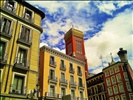

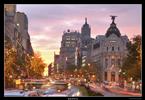

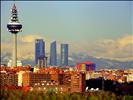

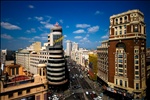

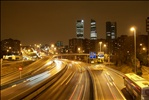


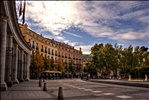



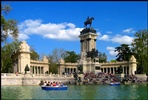
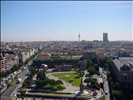
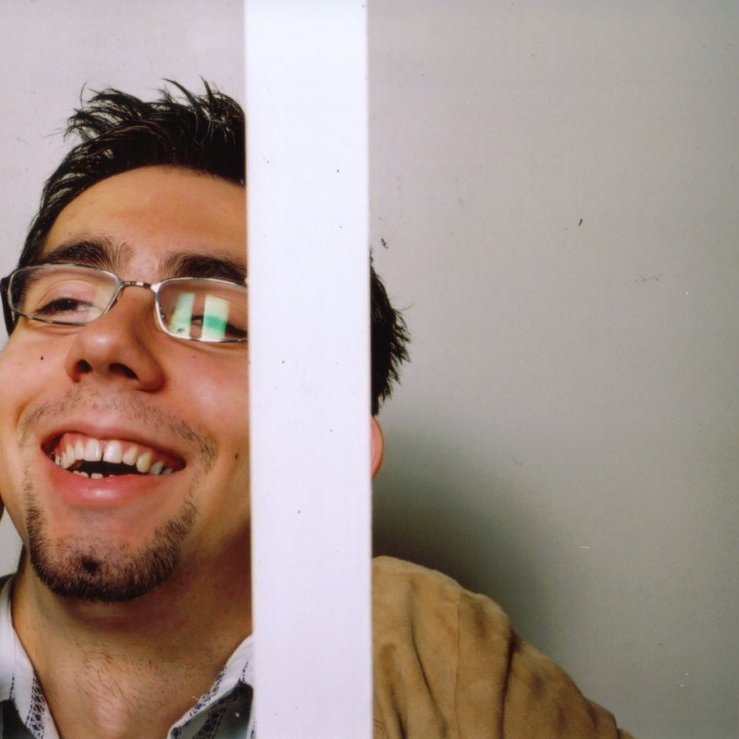










I liked
Love it. Vibrant city, a combination of everything really - heritage, culture, nightlife...I disliked
just a bit too far from the city